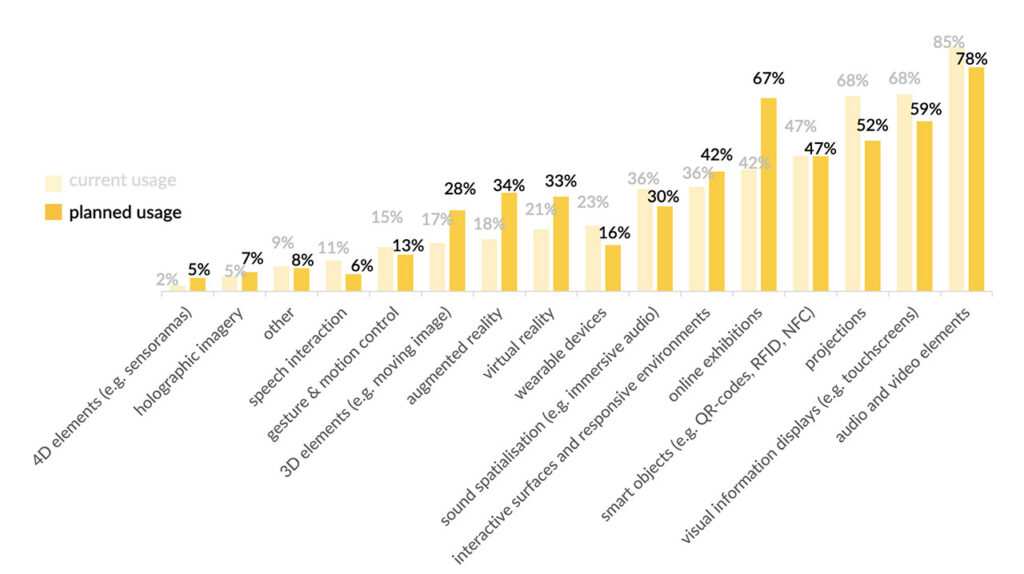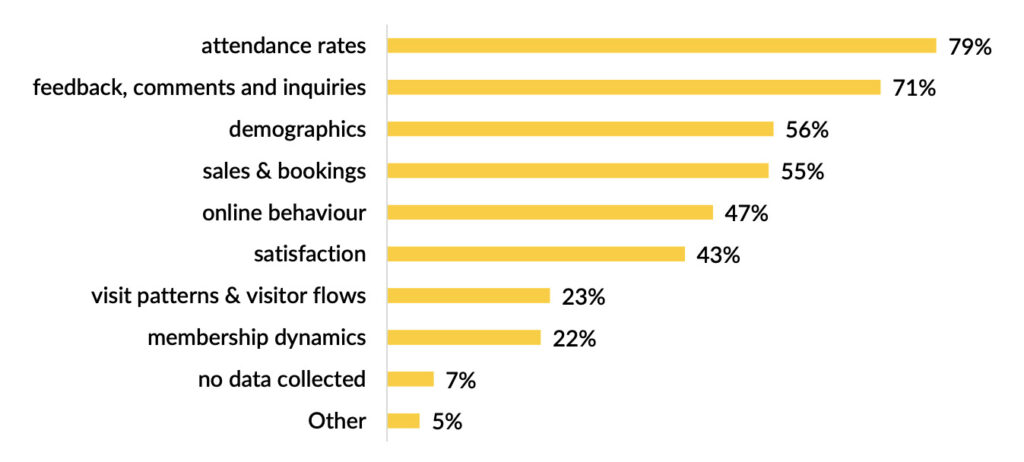Museum Booster, a Vienna-based consultancy, has released Museum Innovation Barometer 2021, which measures how museums have adopted digital tools and technologies in their operations in 2020. Between December 2020 to May 2021, the company interviewed approximately 200 international museums via a digital survey, with the majority of respondents being European institutions, and focused on art and history.
The pandemic served as a significant reason for digitalization, as museums sought new ways to attract visitors online. YouTube and Zoom were the most used platforms, with livestreaming, online tours, virtual exhibitions, podcasts, and “social media challenges” being some of the most popular digital formats. Onsite, digital wayfinding and online ticketing have also surfaced to meet the pandemic-related demands of contactless access, while content management systems were increasingly implemented over the past year.
Here are three key takeaways from the report.
Technological and digital usage continues to grow

A comparison of current and planned usage of technologies in the domain of exhibitions sees the greatest jump of interest in areas such as online exhibitions, augmented reality, and 3D elements. Image: Museum Booster
While the survey found that only 28 percent of respondents were devising new tools for digital revenue in 2020, a vast majority were clear-eyed about the importance of new technologies as a success factor. Most museums already have technology built into their existing programs — 85 percent report the use of audio and video elements in exhibitions, followed by projections (68 percent), and smart objects such as QR codes and RFID (47 percent) — but crucially, they’re planning to explore future technological implementations.
Comparing the current to the planned tech deployment, the study foresees the most growth in areas such as virtual reality, augmented reality, 3D elements, and online exhibitions. However, little to insignificant interest was noted for newer applications such as holographic and 4D technologies. In a similar comparison, digital tools such as podcasts, mobile apps, livestreaming, and portable audio guides recorded the highest level of planned usage.
Data comes to the fore

What kind of data do museums collect? The survey found that most tracked attendance rates, feedback, and demographics. Image: Museum Booster
With digitization, museums have a greater opportunity than ever to track, collect, and assess visitor data. The Museum Innovation Barometer recorded that 79 percent of its survey participants do collect data related to attendance rates, though less than half monitor online behaviors and membership dynamics. Seven percent collect no data at all.
And what do institutions do with that data? 76 percent of respondents say they use the data for historical analysis, to understand past outcomes. Lesser still are those who collect data for prescriptive (17 percent) and predictive (10 percent) purposes to explore possible options and model future outcomes. For those who use their data, most respondents say it’s put towards enhancing the visitor experience (72 percent) and optimizing operations (47 percent).
Considering technology as utility

Over lockdown, the National Gallery Singapore’s #GalleryAnywhere portal encouraged online visitors to continue engaging with the museum’s collections and exhibitions. Image: National Gallery Singapore
Overall, the Museum Innovation Barometer that museums made notable movements toward tech and digital innovation over the past year, highlighting digital transformations by venues such as the Museum of New Zealand Te Papa Tongarewa and the National Gallery Singapore.
As necessitated by lockdowns, most of the newly adopted tools were audience-facing solutions, but the report notes significant room for growth in access, visitor flow and crowd management, and in digital tools for exhibition planning and curation. As Catherine Devine, Microsoft’s Business Strategy Leader of Libraries & Museums, put it in an interview with Museum Booster, “Museums need to reframe technology and see it as a service and a utility, rather than as a showpiece.”



